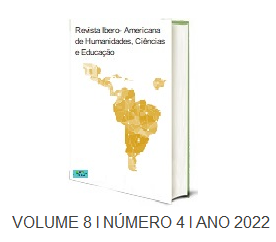MONITORAMENTO DO NÍVEL DE GÁS DE COZINHA: DETECÇÃO DE VAZAMENTO COM BLOQUEIO DO GÁS, E ACESSIBILIDADE VISUAL COM SINALIZAÇÃO LUMINOSA
DOI:
https://doi.org/10.51891/rease.v8i4.5476Palabras clave:
Gás. Monitoramento. Arduíno. Acessibilidade.Resumen
O presente trabalho descreve um projeto de acessibilidade e automação, em um processo residencial que visa resolver um problema comum nos lares brasileiros, que é: não conseguir identificar a quantidade de gás de cozinha que há disponível, ficando esse monitoramento a cargo de práticas manuais, bem como também a descoberta de vazamentos de gás ficar por conta da percepção do usuário apenas pelo olfato, ou seja, não há nenhum mecanismo de identificação e ação mais eficiente; e visando proporcionar mais acessibilidade a pessoas com dificuldades visuais, surge a visualização dos condimentos da cozinha através dos porta-condimentos com leds de identificação por cores e sinalização de sua localização na cozinha através da oscilação das luz emitida. Mediante a isso a proposta do projeto tem como meta realizar o monitoramento do nível de gás a partir do peso do botijão, a detecção de vazamentos do gás, bem como também a localização luminosa dos condimentos na cozinha. Parte dessa iniciativa será através de uma aplicação prática por meio do Arduino, juntamente com sensores e componentes de auxílio ao monitoramento; usando recursos de fácil acesso e baixo custo, além de fácil uso, para com isso proporcionar comodidade e praticidade no gerenciamento desse recurso.
Descargas
Descargas
Publicado
Cómo citar
Número
Sección
Categorías
Licencia
Atribuição CC BY

